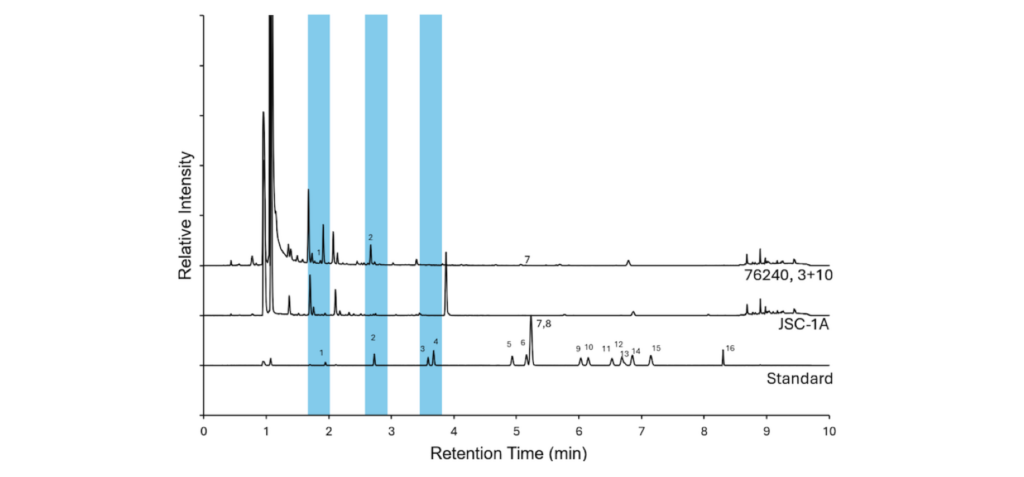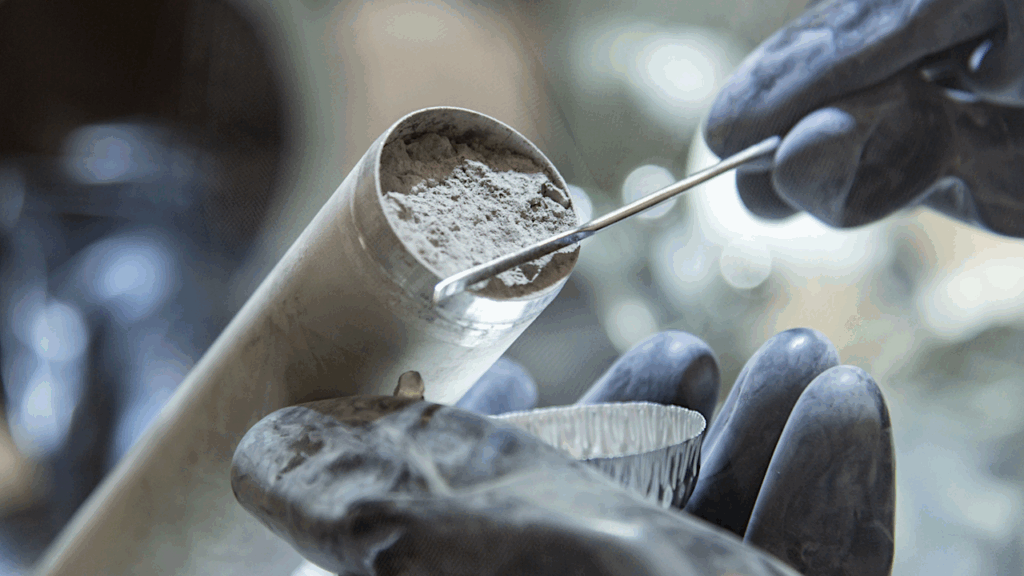Sample Return Contamination? Soluble Organic Compounds and Cyanide in Apollo 17 Lunar Samples: Origins and Curation Effects

We analyzed twelve Apollo 17 samples through the Apollo Next Generation Sample Analysis (ANGSA) program to determine the abundances of a variety of compound classes, including amino acids, aldehydes, ketones, amines, carboxylic acids, and cyanide-releasing species.
Analyzed samples included portions of double drive tube 73001/73002, the bottom half of which (73001) was hermetically sealed under lunar vacuum, as well as lunar regolith samples from three different illumination environments that had been curated frozen for ∼50 years. Consistent with previous results, we detected low levels of amino acids in the hot-water extracts of most samples (0.55–12.03 nmol/g in unhydrolyzed samples; 0.53–72.38 nmol/g after acid hydrolysis of the extracts).

The 0 to 10 min. region of the LC-FD chromatograms region of the LC-FD chromatograms (no significant peaks were observed outside of this retention time range). AccQ·Tag derivatization (10 min) of amines in the standard and of the room temperature water extracts. Peaks were identified in the samples by comparison of the UV fluorescence retention time and multiple reaction monitoring mass (MRM) transitions to those in the standard analyzed on the same day and are designated by peak numbers as follows: 1) methylamine; 2) ethylamine; 3) isopropylamine; 4) propylamine; 5) secbutylamine; 6) isobutylamine; 7) n-butylamine; 8) tert-butylamine; 9) 3- aminopentane; 10) 2-amino-3-methylbutane; 11) sec-pentylamine; 12) 2- methylbutylamine; 13) tert-pentylamine; 14) isopentylamine; 15) pentylamine; and 16) hexylamine. — — JGR Planets
We also detected one-carbon and two-carbon species of amines, aldehydes, and carboxylic acids (i.e., methylamine, ethylamine, formaldehyde, acetaldehyde, formic acid, acetic acid) not previously reported in lunar samples, as well as insoluble cyanide-forming species.
Although these compounds are potential precursor molecules for amino acids, no specific precursor relationships could be determined. Nylon contamination was the likely source of some amino acids. Abundances of some species (e.g., cyanide) decreased with increasing depth in the drive tube, suggesting that exogenous delivery and concentration mechanisms near the surface outweighed surface degradation processes.
In addition, we observed the potential cold trapping of volatile amines in the persistently shadowed samples analyzed. Finally, we noted the effects of different curation conditions; hermetic sealing appeared to preserve higher amounts of volatile compounds, while frozen curation did not have a noticeable preservation effect on the organic volatiles analyzed here.

Abundances (nmol/sample) of ε-amino-n-caproic acid (EACA) measured during analysis of the procedural blank, JSC-1 lunar simulant, surface lunar samples (frozen and room temperature), and witness foils processed together in May 2022. Note that the procedural blank value (shown as dashed lines) were then subtracted from the values measured for the JSC-1 and lunar samples before converting those abundances into the nmol/g values reported in Tables S6-S8. The cause for the high value in the unhydrolyzed JSC-1 sample is unknown. The variations between samples and the increased EACA abundances in the lunar samples compared to the procedural blank and JSC-1 control suggest an EACA source beyond sample analysis, most likely during an earlier stage of collection, curation, and/or handling. — JGR Planets
Soluble Organic Compounds and Cyanide in Apollo 17 Lunar Samples: Origins and Curation Effects, JGR Planets
Astrobiology, Astrochemistry








